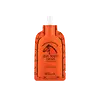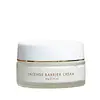What's inside
What's inside
 Key Ingredients
Key Ingredients

 Benefits
Benefits

 Concerns
Concerns

 Ingredients Side-by-side
Ingredients Side-by-side

Water
Skin ConditioningCaprylic/Capric Triglyceride
MaskingHorse Fat
Skin ConditioningButylene Glycol
HumectantButyrospermum Parkii Butter
Skin ConditioningBeeswax
Emulsion StabilisingCyclopentasiloxane
EmollientCyclohexasiloxane
EmollientGlycerin
HumectantCetearyl Alcohol
EmollientCetyl Alcohol
EmollientGlyceryl Acrylate/Acrylic Acid Copolymer
HumectantPvm/Ma Copolymer
Emulsion Stabilising1,2-Hexanediol
Skin ConditioningNiacinamide
SmoothingDimethicone
EmollientSodium Hyaluronate
HumectantEthylhexylglycerin
Skin ConditioningPolysorbate 60
EmulsifyingDimethicone/Vinyl Dimethicone Crosspolymer
Skin ConditioningBetaine
HumectantCaprylyl Glycol
EmollientHydroxyacetophenone
AntioxidantSorbitan Sesquioleate
EmulsifyingGlyceryl Stearate
EmollientCarbomer
Emulsion StabilisingTromethamine
BufferingParfum
MaskingXanthan Gum
EmulsifyingAdenosine
Skin ConditioningTocopheryl Acetate
AntioxidantDisodium EDTA
Caviar Extract
Skin ConditioningCeramide NP
Skin ConditioningWater, Caprylic/Capric Triglyceride, Horse Fat, Butylene Glycol, Butyrospermum Parkii Butter, Beeswax, Cyclopentasiloxane, Cyclohexasiloxane, Glycerin, Cetearyl Alcohol, Cetyl Alcohol, Glyceryl Acrylate/Acrylic Acid Copolymer, Pvm/Ma Copolymer, 1,2-Hexanediol, Niacinamide, Dimethicone, Sodium Hyaluronate, Ethylhexylglycerin, Polysorbate 60, Dimethicone/Vinyl Dimethicone Crosspolymer, Betaine, Caprylyl Glycol, Hydroxyacetophenone, Sorbitan Sesquioleate, Glyceryl Stearate, Carbomer, Tromethamine, Parfum, Xanthan Gum, Adenosine, Tocopheryl Acetate, Disodium EDTA, Caviar Extract, Ceramide NP
Water
Skin ConditioningGlycerin
HumectantButylene Glycol
HumectantSqualane
EmollientDimethicone
EmollientButyrospermum Parkii Butter
Skin ConditioningNiacinamide
SmoothingCaprylic/Capric/Myristic/Stearic Triglyceride
EmollientOctyldodecyl Myristate
EmollientPhytosteryl/Octyldodecyl Lauroyl Glutamate
Skin ConditioningBetaine
HumectantPentylene Glycol
Skin ConditioningHydrogenated Lecithin
EmulsifyingCeramide Ng
Skin ConditioningSodium Hyaluronate
HumectantUrea
BufferingDipotassium Glycyrrhizate
HumectantDisodium EDTA
Sodium PCA
HumectantPhytosterols
Skin ConditioningSodium Hydroxide
BufferingTocopherol
Antioxidant1,2-Hexanediol
Skin ConditioningBehenyl Alcohol
EmollientBeeswax
Emulsion StabilisingPolyglycerin-3
HumectantAcrylates/C10-30 Alkyl Acrylate Crosspolymer
Emulsion StabilisingCarbomer
Emulsion StabilisingXanthan Gum
EmulsifyingPhenoxyethanol
PreservativeWater, Glycerin, Butylene Glycol, Squalane, Dimethicone, Butyrospermum Parkii Butter, Niacinamide, Caprylic/Capric/Myristic/Stearic Triglyceride, Octyldodecyl Myristate, Phytosteryl/Octyldodecyl Lauroyl Glutamate, Betaine, Pentylene Glycol, Hydrogenated Lecithin, Ceramide Ng, Sodium Hyaluronate, Urea, Dipotassium Glycyrrhizate, Disodium EDTA, Sodium PCA, Phytosterols, Sodium Hydroxide, Tocopherol, 1,2-Hexanediol, Behenyl Alcohol, Beeswax, Polyglycerin-3, Acrylates/C10-30 Alkyl Acrylate Crosspolymer, Carbomer, Xanthan Gum, Phenoxyethanol
Ingredients Explained
These ingredients are found in both products.
Ingredients higher up in an ingredient list are typically present in a larger amount.
1,2-Hexanediol is a synthetic liquid and another multi-functional powerhouse.
It is a:
- Humectant, drawing moisture into the skin
- Emollient, helping to soften skin
- Solvent, dispersing and stabilizing formulas
- Preservative booster, enhancing the antimicrobial activity of other preservatives
Beeswax is natural wax produced by honey bees and can be synthetically created. It consists mainly of fatty acid esters and long-chain alcohols.
In cosmetics, beeswax is a emollient. Due to its waxy structure, it creates a protective barrier. This barrier prevents water from evaporating off the skin.
This may not be a good ingredient for oily skin. We recommend speaking with a professional if you have concerns.
Beeswax cannot be removed with water, but can be taken off with an oil cleanser.
Beeswax is also antiseptic and contains vitamin A.
Learn more about BeeswaxBetaine is a common humectant (a substance that promotes retention of moisture). It's known to be gentle on the skin and can help balance hydration.
This ingredient is best for improving hydration and soothing irritated skin. Studies also show it helps even out skin tone.
Fun fact: Betaine is naturally created in the skin and body. The kind found within cosmetic products can be either plant-derived or synthetic.
Another name for betaine is trimethylglycine.
Learn more about BetaineButylene Glycol (or BG) is used within cosmetic products for a few different reasons:
Overall, Butylene Glycol is a safe and well-rounded ingredient that works well with other ingredients.
Though this ingredient works well with most skin types, some people with sensitive skin may experience a reaction such as allergic rashes, closed comedones, or itchiness.
Learn more about Butylene GlycolThis ingredient is also known as shea butter. It is an effective skin hydrator and emollient.
Emollients help soothe and soften your skin. It does this by creating a protective film on your skin. This barrier helps trap moisture and keeps your skin hydrated. Emollients may be effective at treating dry or itchy skin.
Shea butter is rich in antioxidants. Antioxidants help fight free-radicals, or molecules that may harm the body. It is also full of fatty acids including stearic acid and linoleic acid. These acids help replenish the skin and keep skin moisturized.
While Shea Butter has an SPF rating of about 3-4, it is not a sunscreen replacement.
Shea butter may not be fungal acne safe. We recommend speaking with a professional if you have any concerns.
Learn more about Butyrospermum Parkii ButterCarbomer is a polymer of acrylic acid. Its main role is to create a gel consistency.
A high amount of carbomer can cause pilling or balling up of products. Don't worry, most products contain 1% or less of carbomer.
Dimethicone is a type of synthetic silicone created from natural materials such as quartz.
What it does:
Dimethicone comes in different viscosities:
Depending on the viscosity, dimethicone has different properties.
Ingredients lists don't always show which type is used, so we recommend reaching out to the brand if you have questions about the viscosity.
This ingredient is unlikely to cause irritation because it does not get absorbed into skin. However, people with silicone allergies should be careful about using this ingredient.
Note: Dimethicone may contribute to pilling. This is because it is not oil or water soluble, so pilling may occur when layered with products. When mixed with heavy oils in a formula, the outcome is also quite greasy.
Learn more about DimethiconeDisodium EDTA plays a role in making products more stable by aiding other preservatives.
It is a chelating agent, meaning it neutralizes metal ions that may be found in a product.
Disodium EDTA is a salt of edetic acid and is found to be safe in cosmetic ingredients.
Learn more about Disodium EDTAGlycerin is already naturally found in your skin. It helps moisturize and protect your skin.
A study from 2016 found glycerin to be more effective as a humectant than AHAs and hyaluronic acid.
As a humectant, it helps the skin stay hydrated by pulling moisture to your skin. The low molecular weight of glycerin allows it to pull moisture into the deeper layers of your skin.
Hydrated skin improves your skin barrier; Your skin barrier helps protect against irritants and bacteria.
Glycerin has also been found to have antimicrobial and antiviral properties. Due to these properties, glycerin is often used in wound and burn treatments.
In cosmetics, glycerin is usually derived from plants such as soybean or palm. However, it can also be sourced from animals, such as tallow or animal fat.
This ingredient is organic, colorless, odorless, and non-toxic.
Glycerin is the name for this ingredient in American English. British English uses Glycerol/Glycerine.
Learn more about GlycerinNiacinamide is a multitasking form of vitamin B3 that strengthens the skin barrier, reduces pores and dark spots, regulates oil, and improves signs of aging.
And the best part? It's gentle and well-tolerated by most skin types, including sensitive and reactive skin.
You might have heard of "niacin flush", or the reddening of skin that causes itchiness. Niacinamide has not been found to cause this.
In very rare cases, some individuals may not be able to tolerate niacinamide at all or experience an allergic reaction to it.
If you are experiencing flaking, irritation, and dryness with this ingredient, be sure to double check all your products as this ingredient can be found in all categories of skincare.
When incorporating niacinamide into your routine, look out for concentration amounts. Typically, 5% niacinamide provides benefits such as fading dark spots. However, if you have sensitive skin, it is better to begin with a smaller concentration.
When you apply niacinamide to your skin, your body converts it into nicotinamide adenine dinucleotide (NAD). NAD is an essential coenzyme that is already found in your cells as "fuel" and powers countless biological processes.
In your skin, NAD helps repair cell damage, produce new healthy cells, support collagen production, strengthen the skin barrier, and fight environmental stressors (like UV and pollution).
Our natural NAD levels start to decline with age, leading to slower skin repair, visible aging, and a weaker skin barrier. By providing your skin niacinamide, you're recharging your skin's NAD levels. This leads to stronger, healthier, and younger looking skin.
Another name for vitamin B3 is nicotinamide. This vitamin is water-soluble and our bodies don't store it. We obtain Vitamin B3 from either food or skincare. Meat, fish, wheat, yeast, and leafy greens contain vitamin B3.
The type of niacinamide used in skincare is synthetically created.
Learn more about NiacinamideSodium Hyaluronate is hyaluronic acid's salt form. It is commonly derived from the sodium salt of hyaluronic acid.
Like hyaluronic acid, it is great at holding water and acts as a humectant. This makes it a great skin hydrating ingredient.
Sodium Hyaluronate is naturally occurring in our bodies and is mostly found in eye fluid and joints.
These are some other common types of Hyaluronic Acid:
Learn more about Sodium HyaluronateWater. It's the most common cosmetic ingredient of all. You'll usually see it at the top of ingredient lists, meaning that it makes up the largest part of the product.
So why is it so popular? Water most often acts as a solvent - this means that it helps dissolve other ingredients into the formulation.
You'll also recognize water as that liquid we all need to stay alive. If you see this, drink a glass of water. Stay hydrated!
Learn more about WaterXanthan gum is used as a stabilizer and thickener within cosmetic products. It helps give products a sticky, thick feeling - preventing them from being too runny.
On the technical side of things, xanthan gum is a polysaccharide - a combination consisting of multiple sugar molecules bonded together.
Xanthan gum is a pretty common and great ingredient. It is a natural, non-toxic, non-irritating ingredient that is also commonly used in food products.
Learn more about Xanthan Gum